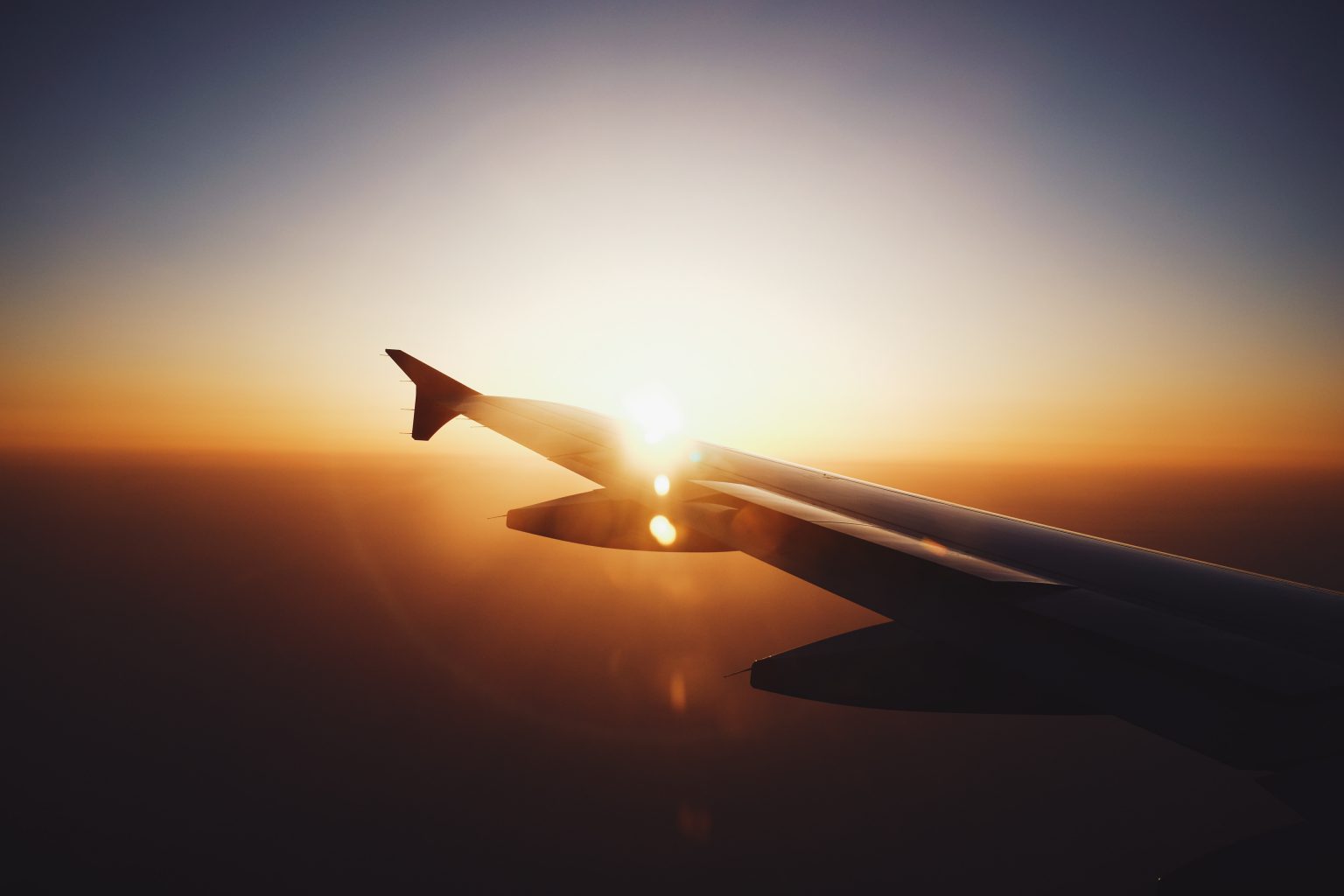This post was in collaboration with Mango Airlines and is about flying during pregnancy.
One of the most popular questions many first-time moms ask is: “Is it safe to travel during pregnancy and what are the current laws regarding this?”
This post will have all the important information that you need to know about flying while you are pregnant and includes tips that can help you have a comfortable journey.
It is important that you ask your doctor for advice before you travel. I remember that during my last pregnancy, I planned a trip to Durban for my babymoon, but my doctor recommended that I cancel the trip. I followed his advice. My baby ended up arriving before his due date.
Can I travel during pregnancy?
Yes, you can during – especially during early pregnancy, and if you do not have any complications.
For both single pregnancies and multiple pregnancies between 28-35 Weeks:
A medical certificate stating that you are fit to travel by air will be required. You will need to carry a copy of the medical certificate, on person, during travel.
For single pregnancies from 36 Weeks and multiple pregnancies from 32 Weeks:
Most airlines do not permit Guests to travel. It is dangerous for both you and your soon-to-be-born baby or babies.
Are there any risks traveling during pregnancy?
If you have a high-risk pregnancy, I suggest that you consult your doctor first otherwise it should be fine – unless there is a major breakout like Ebola etc which puts you and your baby’s health at risk.
There are germs all around us and when you are pregnant, it can be easier to pick up an infection. It is important you take your vitamins and perhaps carry a hand sanitizer when you are traveling locally and internationally.
There may be a slight risk of developing deep vein thrombosis – however, this is more likely to occur during longer flights. To try to prevent this risk, keep your circulation flowing by doing stretches or walking up and down the cabin.
Many women end up with swollen feet after traveling. This could be an indication that you need to slow down and get some rest. Also, check in with your doctor if you experience any of the following before or after traveling:
- Fetal movement changes
- Abdominal pain
- Headaches
- Vision changes
- Bleeding
- Swelling
The main reason that many women don’t travel much during the first trimester is because of the morning sickness. This can make your flight very uncomfortable. After 36 weeks, you can go into labor anytime which makes traveling long distance (by car or plane) a big No.
The second trimester is usually the best time to travel because your energy levels are better and morning sickness should be a thing of the past.
Can flying cause a miscarriage?
Remember that the risk of having a miscarriage is higher in the first three months – whether you’re traveling or not. This has been a debate for many years. You can read about it here – www.nytimes.com.
Will changes in altitude or temperature make morning sickness worse?
There is a chance your morning sickness can be aggravated – however you are more likely to get dehydrated at high altitudes.
Is the airplane cabin pressure safe during pregnancy?
On commercial airplanes, yes. The cabins of the airplanes are pressurized to ensure your comfort.
Are Security metal detectors and full body scanners safe to use when you are pregnant?
Yes
Do I need to check with my medical aid before flying?
It is a good idea to read up on your medical aid to find out if your current plan covers emergencies during flying.
10 Tips for flying during pregnancy:
1. Wear comfortable clothing and shoes.
2. Leave earlier for the airport so that you don’t have to rush check-in. I highly recommend Mango’s online check-in service.
3. Carry a few snacks or purchase something from the airline during your flight.
4. Drink plenty of fluids. Do not drink anything with ice in it—ice may be made with contaminated water.
5. Don’t carry heavy bags as carry on luggage. A back pack is the best because it helps cut down on back strain.
6. Place the seatbelt below your belly for maximum comfort.
7. Book or ask to be seated in an aisle seat for easy access to the bathroom facilities.
8. Walk around the cabin hourly, this helps with circulation.
9. Stretch and flex your feet and legs in your seat every half an hour. When seated, rotate your ankles and wiggle your toes.
10. Carry your emergency contact details of your next of kin, a family member and your Doctor in your identity document. If you are already into your 2nd or 3rd trimester, a prenatal chart is required by airlines like Mango.
Other than this – I wish you Bon Voyage.
For further information please contact Mango’s Medical Reservations Department on 086 10 10 214 or visit www.flymango.com.





30 comments
Copper scrap audit Copper scrap audits Scrap Copper reuse
Copper scrap consolidation Green copper recycling Copper scrap dealer network
Local copper scrap buyers Copper sheet scrap Copper scrap legal requirements
Aluminium recycling audit Aluminium scrap import duties Aluminium reclaiming technology
Scrap metal collectors Ferrous metal recovery facility Iron waste reclaiming plant
Ferrous material recycling customer satisfaction, Iron recovery industry, Metal scrap recycling and reclamation
Construction aluminum scrap Scrap aluminium refining Aluminum scrap grading
Scrap metal conveyance Ferrous material customer base Iron processing
Ferrous material stakeholder communication, Iron reclaiming, Scrap metal inspection
Scrap metal traceability Aluminium scrap secondary markets Aluminum scrap uses
Scrap metal reconditioning, Aluminum cable recycling machines, Scrap metal export procedures
Scrap metal reclamation Aluminum scrap industry Aluminium recycling resource management
Scrap metal reclamation and recycling center, Environmentally friendly aluminum cable recycling, Scrap metal recycler
Metal reprocessing depots Aluminium scrap business development Aluminium scrap import/export regulations
Metal reclamation and reutilization solutions, Aluminum cable scrap grading, Scrap metal reprocessing facilities
Industrial metal waste Scrap aluminium revenue streams Aluminium scrap waste reduction
Scrap metal recovery plants, Aluminum cable stripping machine, Metal waste reusability
Metal reclamation and utilization Ferrous waste solutions Iron scrap reprocessing solutions
Ferrous waste stream management, Iron reutilization services, Scrap metal regeneration center
Metal waste disposal center Scrap aluminium market development Challenges in aluminum scrap recycling
Metal recovery and reprocessing, Recycling technology for aluminum cables, Metal retrieval
Metal recycling and recovery solutions Ferrous material recycling techniques Iron scrap reclaiming
Ferrous metal recycling analysis, Iron scrap evaluation, Scrap metal brokering
Metal recovery and processing Aluminium waste recovery Aluminium recycling global impact
Metal waste logistics services, Recycling program for aluminum cables, Metal reclaiming services
Scrap metal dealer Recycled aluminium products Scrap aluminium processing technology
Metal scraps reclamation yard, Aluminum cable scrap transportation logistics, Metal reclamation and repurposing
Metal waste repurposing services Ferrous material agreements Iron reprocessing facility
Ferrous material alloy, Iron reclamation solutions, Scrap metal repackaging
Scrap metal reclamation and recovery Aluminium waste reclamation Scrap aluminium transformation
Metal waste stream management, Aluminum cable scrap recycling industry, Efficient metal scrap handling
Metal recycle Ferrous scrap reuse Iron scrap buyback
Ferrous metal exchange, Iron metal repurposing, Metal reclaiming operations
Scrap metal distribution Ferrous waste regulatory standards Iron scraps recovery yard
Ferrous material recycling safety, Iron waste processing, Scrap metal legal compliance
Copper recycling supply chain Industrial copper scrap Copper wire bar scrap procurement
Scrap metal brokering, Industrial copper recycling capabilities, Scrap metal remodeling
Copper scrap acceptance criteria Copper is a naturally occurring element in the Earth’s crust and is present in many natural processes. It is widely used in industries such as construction, electronics, and agriculture. While copper is essential to many living organisms as a micronutrient, exposure to high levels of copper can result in various health risks. Ingestion or inhalation of high levels of copper can cause gastrointestinal distress, headaches, dizziness, and nausea. Long-term exposure to copper can also lead to liver and kidney damage, as well as anemia and nerve damage. Exposure to copper in the environment can come from various sources, such as industrial waste, mining operations, and agricultural activities. Copper can also leach into drinking water through corroded pipes or excessive runoff from agricultural activities. It is important to note that while copper is a potential health risk, the risks depend on the level and duration of exposure. The World Health Organization (WHO) has set a maximum tolerable level of copper in drinking water at 2.0 milligrams per liter (mg/L) to protect against health risks. Various measures can be taken to reduce the risk of copper exposure in the environment. This includes proper disposal of industrial waste, implementing water treatment processes, and regulating agricultural activities. Overall, while copper is an essential element and has many beneficial uses, exposure to high levels of copper in the environment can pose health risks that need to be addressed and monitored Scrap metal recovery facility Copper alloy refining Ethical copper sourcing Scrap copper transportation Copper sheet coil scrap buyer Scrap metal repurposing technologies
Copper recycling legislation Copper is an important metal used in a variety of applications such as building construction, electrical wiring, plumbing and many other products. As a non-renewable resource, copper mining can be detrimental to the environment. Therefore, recycling copper from various sources is becoming increasingly important to conserve resources and protect the planet. Recycling copper involves melting down scrap copper and transforming it into new copper products. The process of recycling copper requires significantly less energy compared to mining and refining copper from ore. In fact, recycling copper uses around 85-90% less energy than extracting copper from its ore. The sources of copper scrap include discarded electrical wiring, plumbing pipes and fixtures, automobile radiators and other metal components, and electronic components among others. These sources are collected, sorted and processed to extract the copper content. The process of recycling copper from scrap can be broken down into several steps. First, the scrap is sorted into different categories according to its type and condition. The scrap is then cleaned to remove any impurities before it is melted down. The next step is smelting, whereby the cleaned scrap is melted at high temperatures in a furnace. As the copper melts, any impurities are removed, resulting in refined copper. The refined copper is then poured into molds or ingots, ready for further processing. The final step involves milling, where the copper is transferred to a mill to be processed into various products such as wire, tubing, and flat sheets. Copper products produced from recycled sources have similar properties and quality as copper produced from mining and refining. In addition to conserving resources and reducing energy consumption, recycling copper also has economic benefits. It creates jobs in the recycling industry and helps meet global demand for copper at a lower cost. In conclusion, recycling copper from various sources is an important way to conserve resources, reduce energy use, and protect the environment. By collecting and processing scrap copper from various sources, we can reduce our reliance on copper mining and promote sustainable development in the industry Scrap metal price fluctuations Scrap Copper reuse Copper scrap value assessment Scrap Copper sorting Scrap Copper recycling industry Metal reclamation processing
awesome
Scrap metal recycling industry Metal scrap recycling center Iron scrap reclamation and reuse
Ferrous material resource recovery, Iron recycling depot, Scrap metal distribution
Copper scrap export regulations Copper slab scrap procurement Efficient metal handling
Copper cable recycling plant setup, Scrap metal recycling plant, Copper scrap reuse
Metal reclaiming operations, Scrap copper collection, Copper cable reuse options, Metal residue reclamation
Scrap metal recycling and recovery Ferrous scrap eco-friendly practices Iron scrap reclaiming yard
Ferrous material CSR (Corporate Social Responsibility), Iron and steel waste management, Scrap metal sustainability practices
Scrap metal inspection Ferrous material customer base Iron reclaiming services
Ferrous material recycling feasibility, Iron salvage yard services, Scrap metal reclamation and reutilization
Scrap metal inspection services Ferrous metal recovery plant Iron scrap salvage center
Ferrous scrap recycling awareness, Iron scrap reprocessing solutions, Metal recycling compliance
awesome